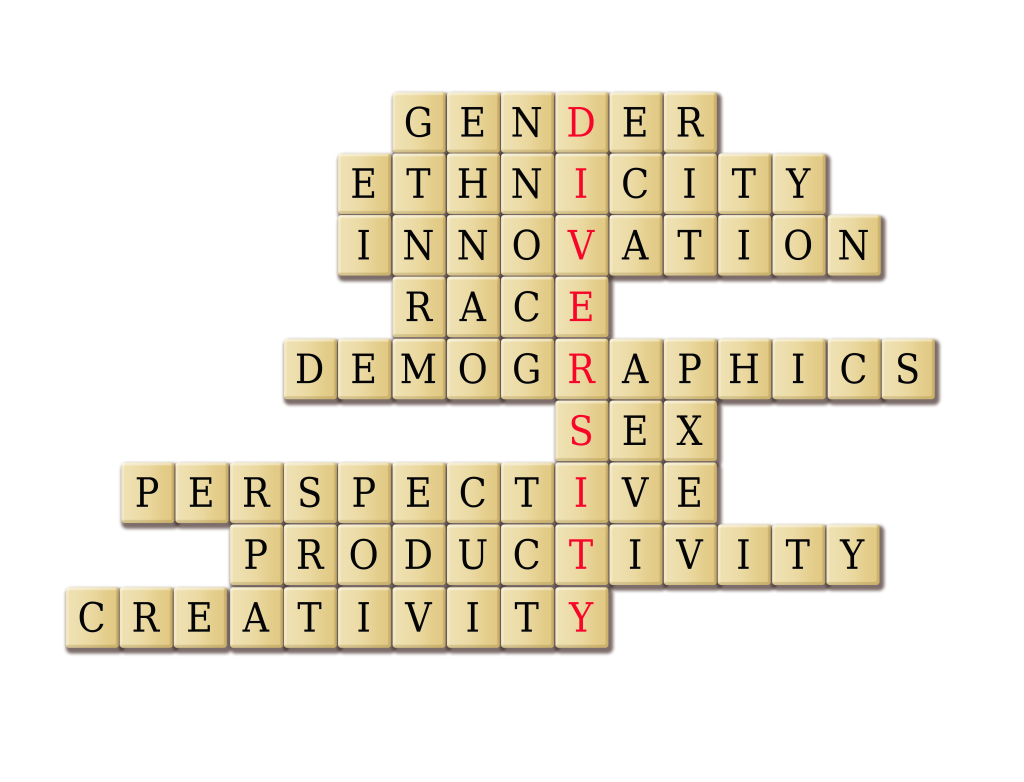 Dictionary.com defines diversity as variety, difference or unlikeness. That certainly covers a lot of ground. I want to talk about diversity from many angles so you can be aware of not only the easily recognizable diversity considerations, but ones that are not so obvious. Great leaders recognize diversity in the workplace.
Dictionary.com defines diversity as variety, difference or unlikeness. That certainly covers a lot of ground. I want to talk about diversity from many angles so you can be aware of not only the easily recognizable diversity considerations, but ones that are not so obvious. Great leaders recognize diversity in the workplace.
Recognizable Diversity Considerations
Let’s start with the basics. When you think of diversity, see if this list is what you consider.
- Race
- Religion
- Ethnic Origin
- Age
- Gender
These are the ones most people mention when I ask what diversity in the workforce means to them. Most companies understand there are government regulations and laws around these and they need to consider them when hiring and promoting.
More Recent Considerations
As the world has changed the government has stepped in to redefine diversity in the workplace and broadened the definition. Diversity and discrimination are not the same and the federal government has included both in many of their new regulations. What is now included?
- Disabilities — this can include physical handicaps, deafness or blindness, and to some extent mental disabilities (where it does not affect job performance)
- Sexual orientation — many companies now have same-sex partners being offered the same benefits as their heterosexual counterparts
- Veterans — government agencies have a requirement for preferential hiring of veterans who meet the skill requirements
Many years ago when I was recruiting, I placed people with client companies who were blind, one who was deaf, and one who had only one arm. Yes, there were some special considerations that needed to be made (i.e., for the person who was deaf, when there was a big meeting an interpreter was brought in), but the quality of their work was not affected by their disability.
As you consider diversity, think beyond race, religion, age, gender, and ethnic origin.
The Less Obvious
Diversity comes in many flavors, as does discrimination. I’ve composed a list of other areas to consider when you think about diversity.
- Education — not everyone has to have the same educational level. Consider the benefits of having diversity among your staff with their education.
- Political views — this an be a hot potato, but hiring or promoting based on political views can be dangerous.
- Different perspectives — if everyone has the same view or is willing to bend to a single point of view, your organization will suffer a lack of creativity and stagnate.
- Work styles and preferences — this is a broad topic, but consider that everyone doesn’t work the same or have the same preferences.
- Working moms — today’s world means a good portion of your staff is likely to be working moms. Don’t ignore hiring or promoting this portion of the population.
- Backgrounds — socio-economically not everyone has to be the same, or come from the same background.
- Indians and chiefs — you can’t have a workforce where everyone wants to get promoted. Having a mix of people who have high aspirations and those who want to come in, work hard, and do a good job with not desire to move up the corporate ladder is what is needed.
- Age — while there are many articles about multiple generations in the workplace and the challenges with millennials, just like everything else, different age groups bring diverse and exciting perspectives.
As you think about diversity in your company, I encourage you to think beyond what the government has mandated you consider. An organization that is made up of people that all think the same, want the same things, have the same backgrounds and education is not only boring, it will lack originality and ingenuity. As individuals, we grow from being around others who are different from us and can learn from them. The same is true in business and great leaders recognize this. While differences can bring challenges, having a company where everyone is the same is like having a company of robots. What fun is it to come to work every day if everything is the same and there is limited opportunity to learn from others?
Tired of the same old culture problems within your organization? Take thirty minutes and talk with Linda about how she has helped other companies move past the types of problems plaguing your firm.






